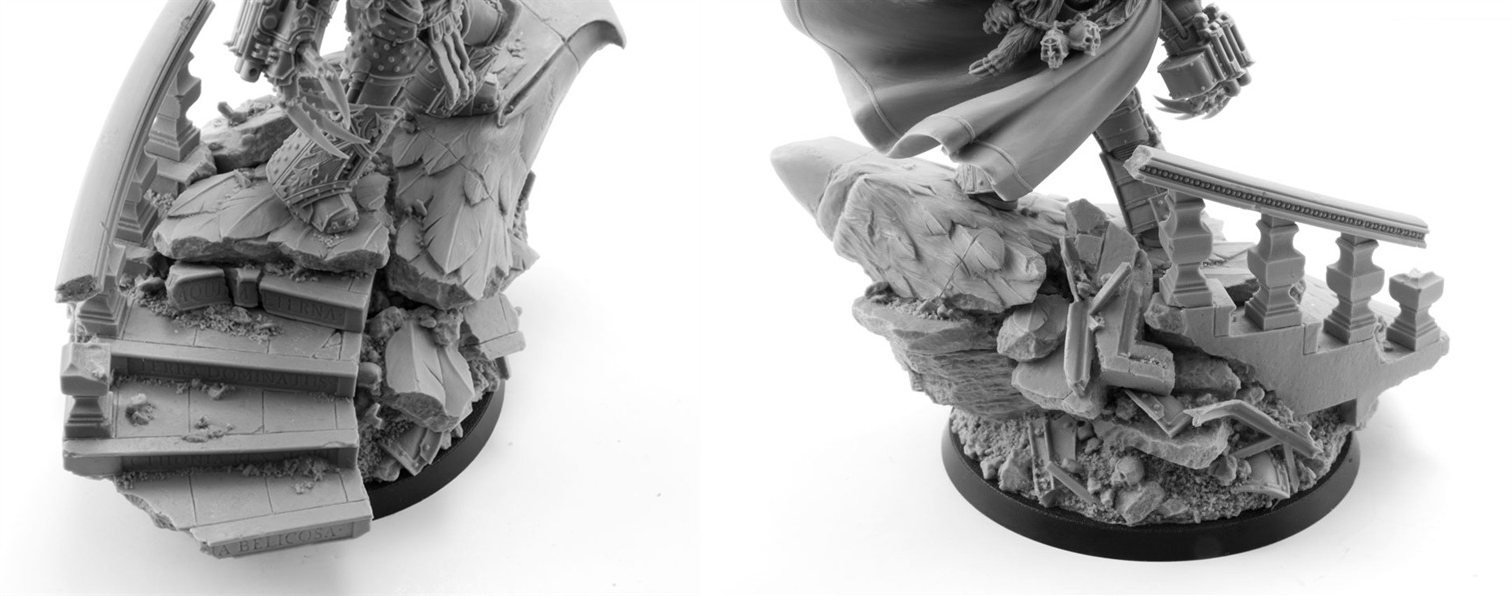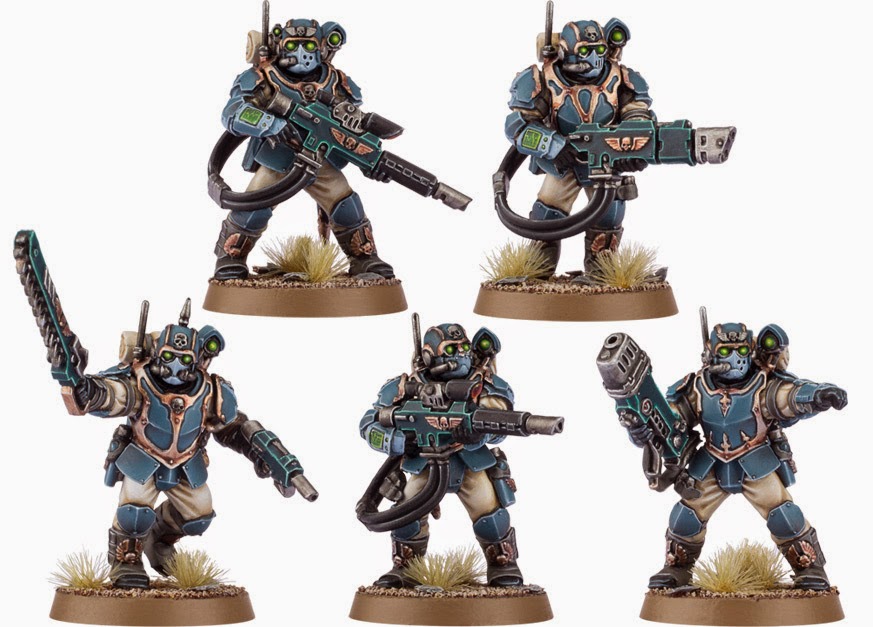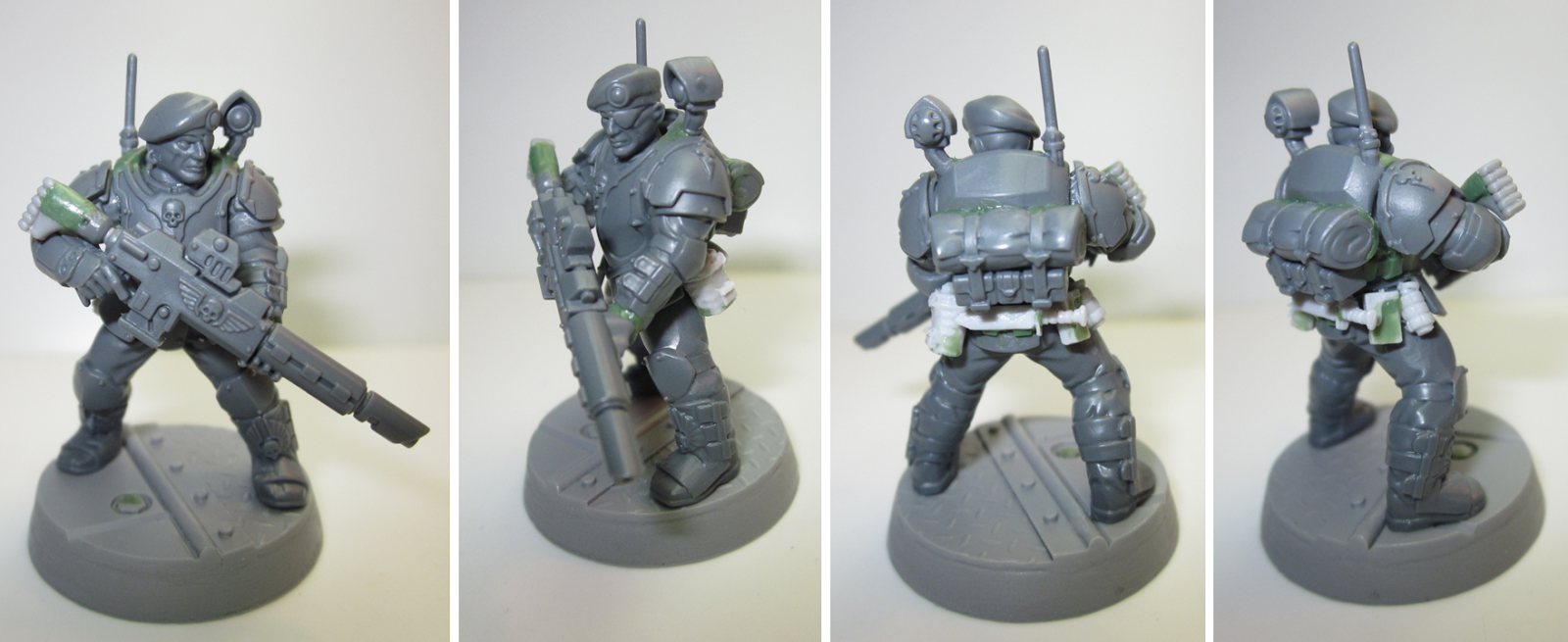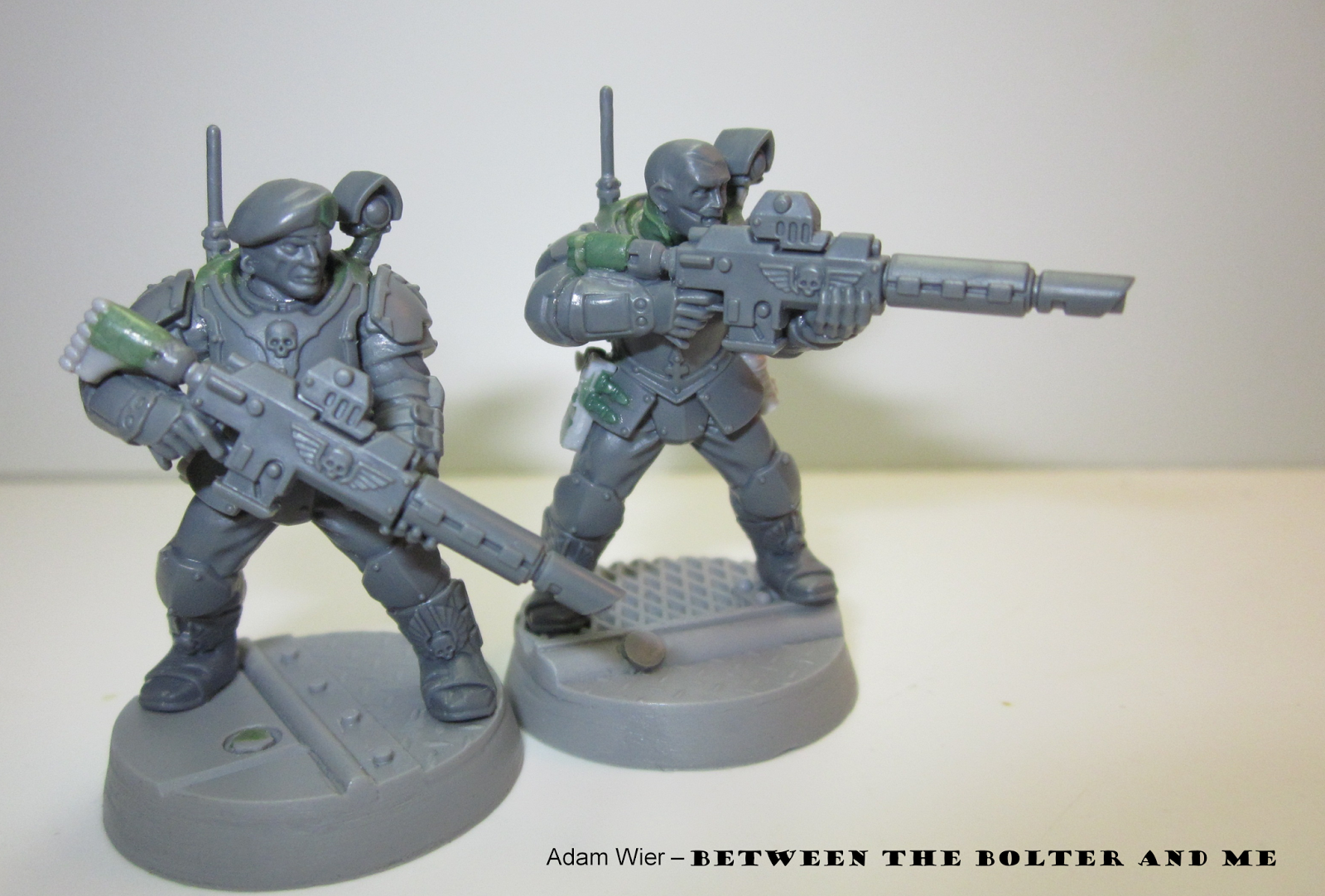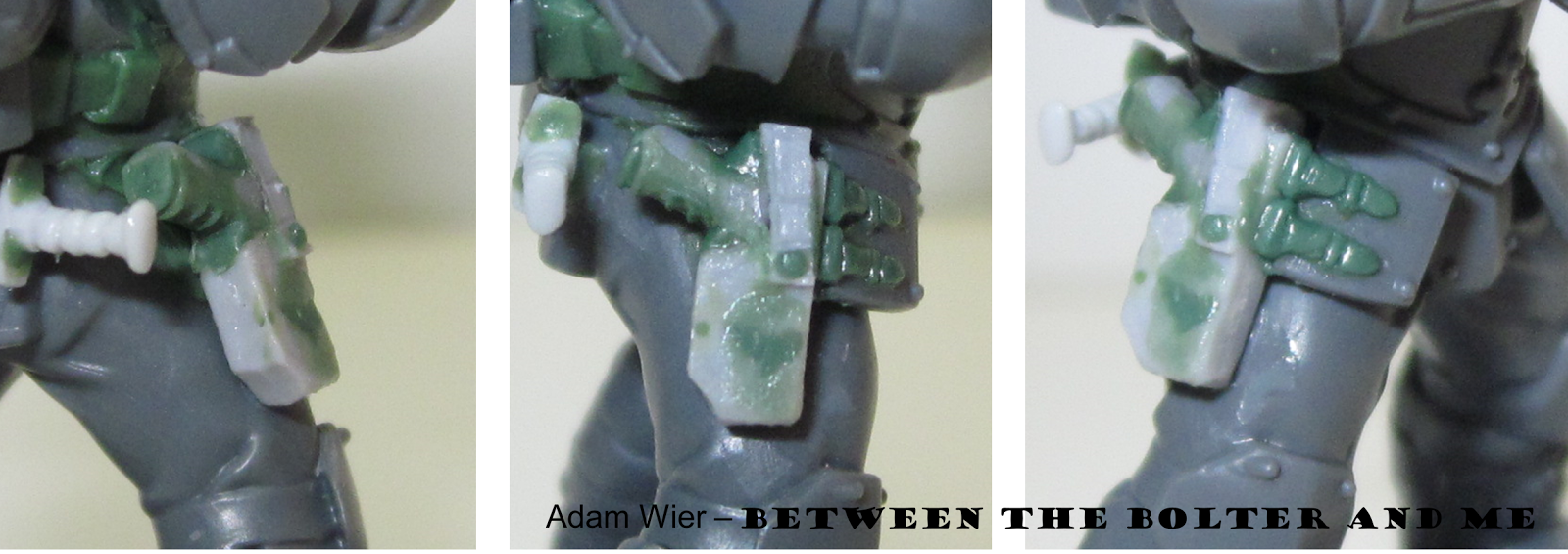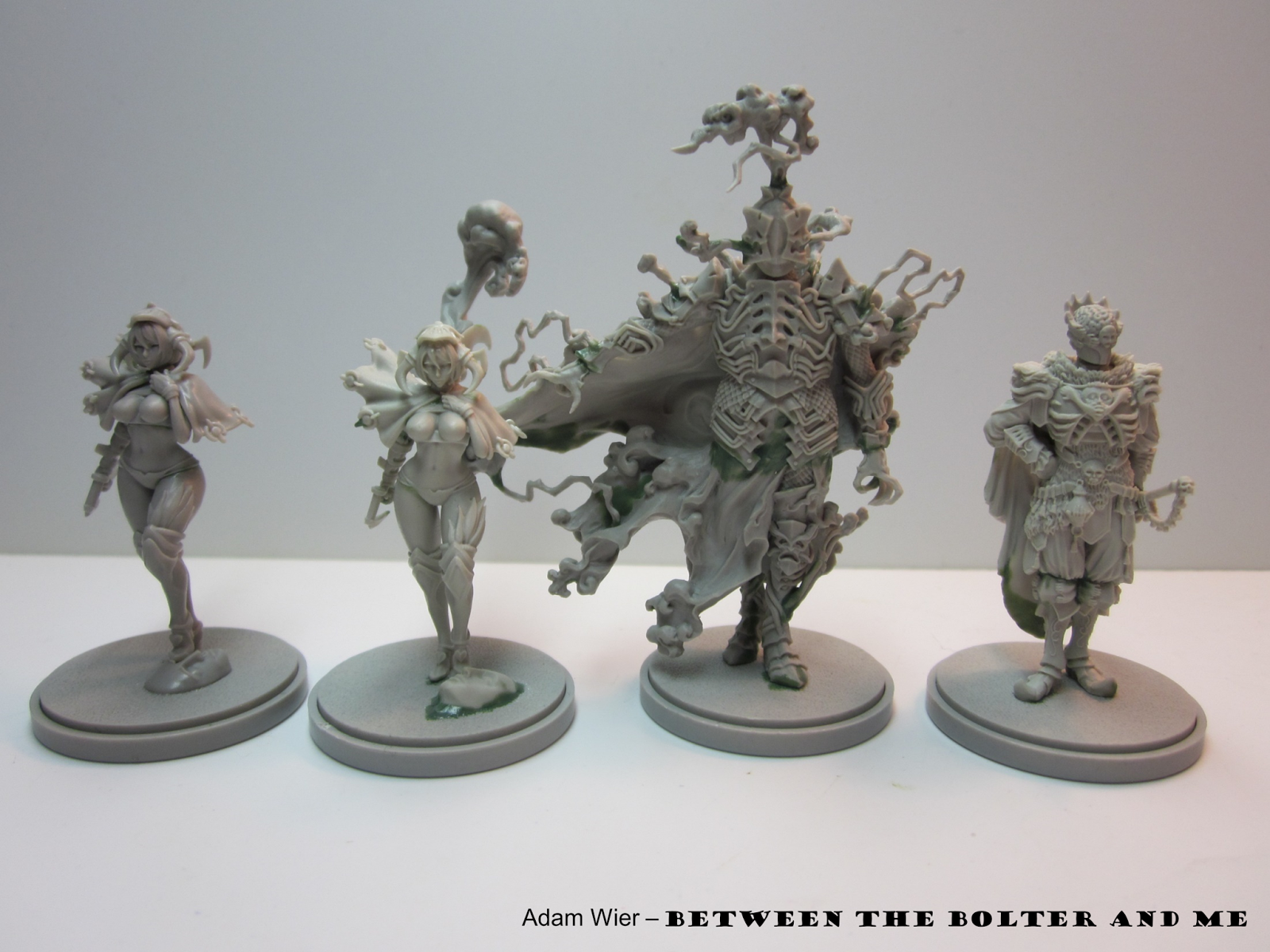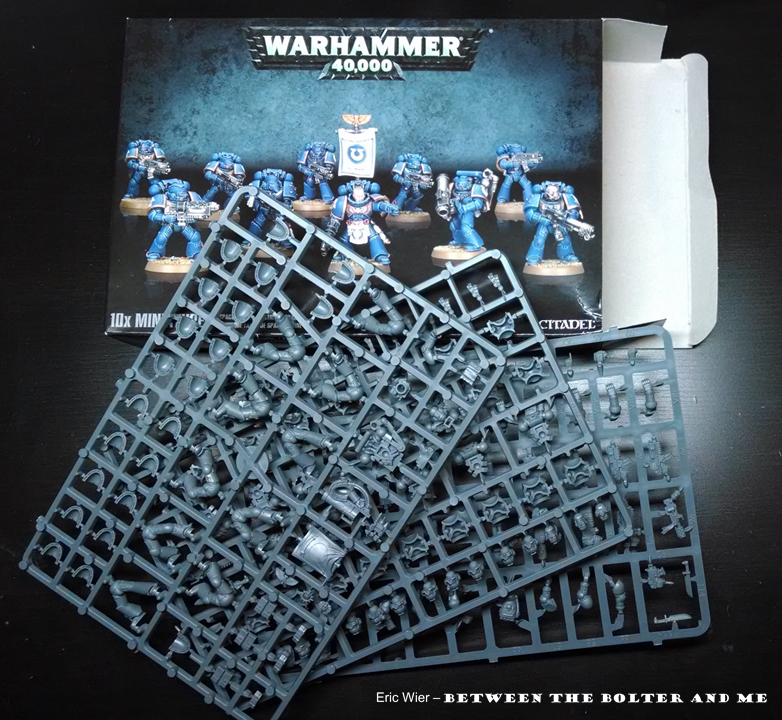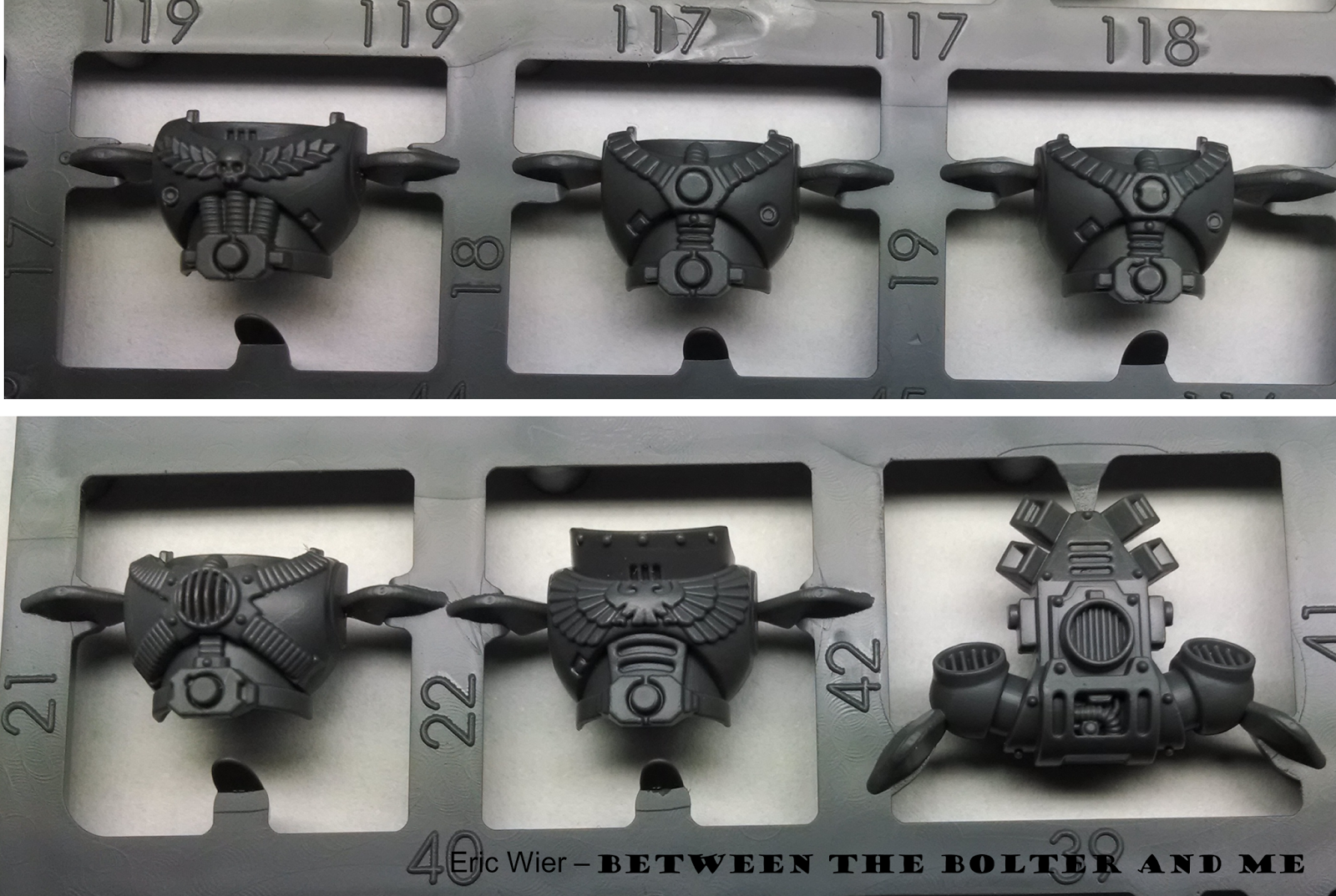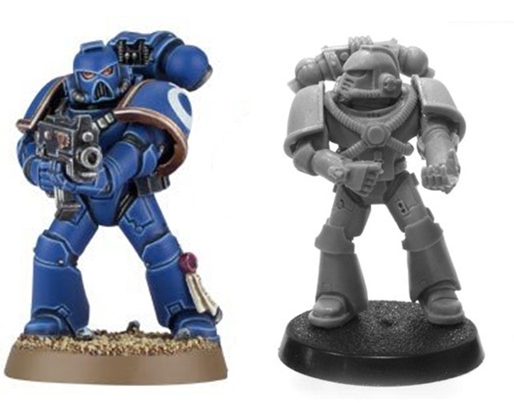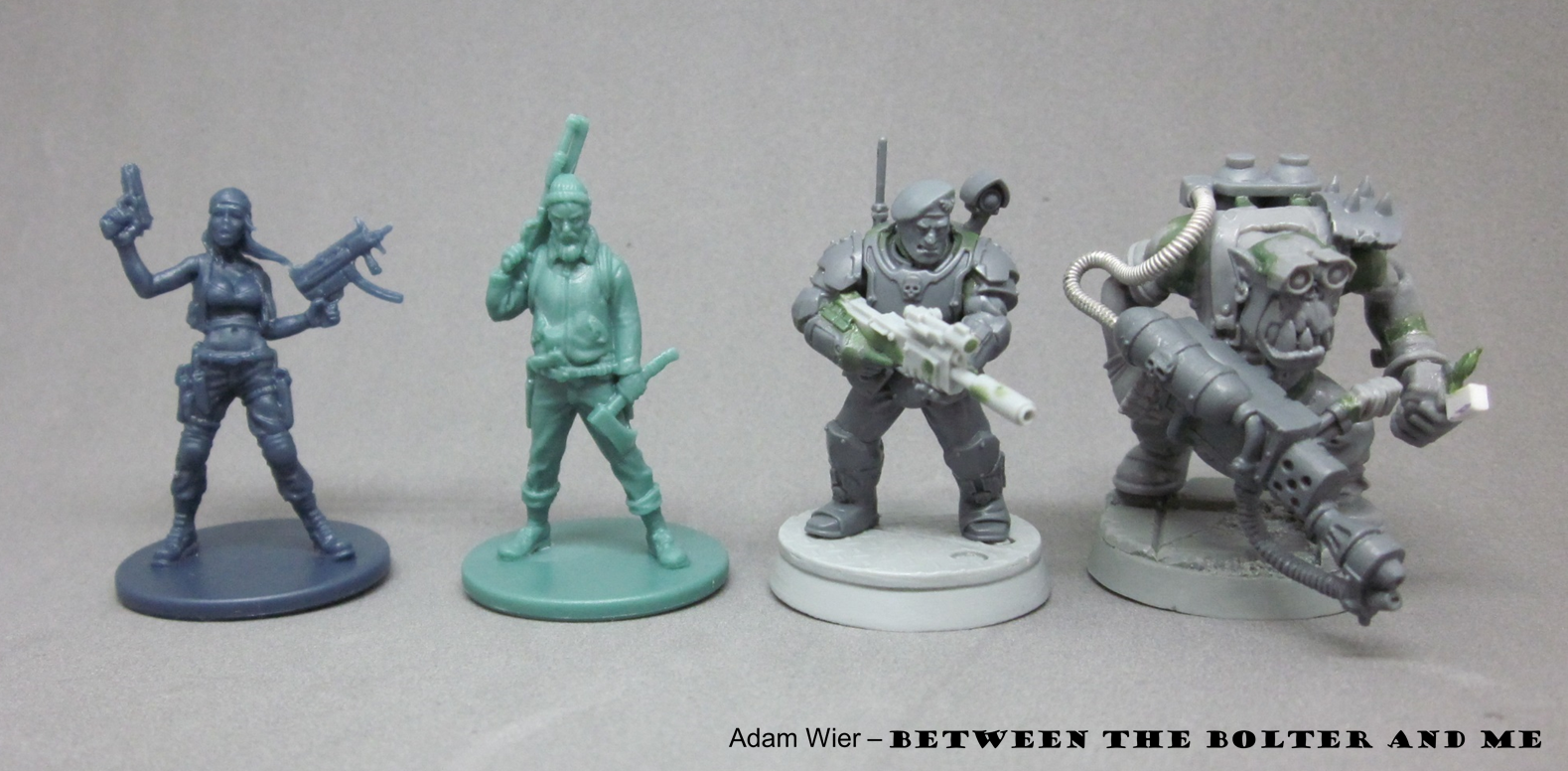![]() |
| "For within each frail human body is the will to grasp the stars and walk a path unto eternity itself." |
People had pretty high hopes the Horus Heresy Weekender event two weekends ago. And with all of the stellar models being released for the Horus Heresy in the last two years, it is obvious why. The Heresy has always been a fascinating story, detailing a civil war of galactic scale, pitting brother Space Marine against brother Space Marine. It was where some of the most iconic Space Marine Chapters came into being and where each were shaped by their own enigmatic and god-like Primarch. When Simon Egan first showed his vision of Angron of the World Eaters, I was stunned with how effectively he captured the savage magistry of the gladiatorial fighter, exceeding all of my expectations. With this release, Forge World showed to the world that they were capable of undertaking the herculean task of sculpting models for figures that hold a mythical status in the imaginations of most Warhammer 40,000 players (or at least the ones who have been playing for awhile). It also began the slow, excruciating count-down until the next Primarch was sculpted. Initially the task fell solely on the shoulders of Simon Egan, but quickly Edgar Skomorowski began sculpting some, as well. Even with the second hand and a span of two years, only 6 of the primarchs have models (of the 12 with rules). Because of this slow release schedule, Forge World events like the Weekender have had the added excitement that they are often where the next primarch model is revealed. This year’s Weekender event was no different, but instead of revealing one primarch and showing a glimpse of the next in some half finished WIP form, they showed two new primarchs! Mortarion the Reaper Primarch of the Death Guard was unveiled and for sale at the event. Unexpectedly, Vulkan, the Promethean Fire and Primarch of the Salamander Chapter was shown in all his fully sculpted glory as well!
Since the release of the first book Betrayal, people have been anxiously waiting for a model for Mortarion, the Sire of the Death Guard. With one of the more interesting origin stories: being raised by a godlike lich that lived in a toxic smog-veiled mountain fortress and subjugated the human population far below. Upon learning of the struggling humans his necromantic master preyed upon, he vowed to bring him and others like him to justice and lead those haunted humans to war. This darkness seeped into Mortarion’s soul and left him a shadowed and nightmaric individual, one that has always been portrayed as a reaper-like figure. The model, lovingly sculpted by Edgar Skomorowski maintains this aesthetic, drawing many influences from previous artwork, particularly one by John Blanche and another by Adrian Smith.
![]() |
| Two, now classic pieces of 40k artwork, were closely followed in the making of Mortarion. |
It is a testament to Skomorowski’s skill as a sculptor that he was able to make such a detailed and unified model when sticking so closely to the two aforementioned pieces of art. While both are imaginative and enjoyable to look at, they are also rather wonky and ill-proportioned. Fitting with his reputation and pragmatism, his armour, the Barbaran Plate is suitably massive, with large unadorned interlocking segmented plates, all brass rimmed. Although certainly an interesting design choice, I am not sure I am a fan the chainmail that connects each of the armoured plates (homage to Adrian Smith’s vision of him). His armoured greaves are also massive, with each finger imposing and formidable (somewhat of a Skomorowski trademark, seen on his
Legion Praetors). Also like the pictures, his shoulder pads are single domed pieces of adamantium that are the only place on the model with Death Guard iconography. From the back of his armour sprouts a frightening array of chemical stacks and tubes, ready to veil him in a miasma of toxins and smoke.
![]() |
| Without a coat of paint, it is clear how broad and plain Mortarion's armour is. It is almost completely bereft of Death Guard iconography. |
Interestingly, Skomorowski deviated from the standard conception of Mortarion with his face. Instead of having his face covered in a grim rebreather that provides him with a slow bleed of noxious fumes and poisonous vapours from his homeworld, he opted for exposing his entire face. I feel many fans of Mortarion might be disappointed in this design choice, but I feel it strengthens the model showing his entire terrifying physiognomy. I think it is Skomorowski’s best sculpted face yet, truly fitting the character. And as not to completely throw off the established background material, the collar of his armour is fitted with all manner of little pipes and tubes to provide the Primarch with the poisonous air he thrives on.
In my opinion, one of the weakest elements of the model are his weapons, which, unsurprisingly, adhere closely to the artwork. His pistol, Lantern, is a bulbous, tin can of a weapon, looking more like something stolen from a B-grade alien film from the 50s, rather than a sinister weapon of unknown origin. And while I am pleased that Silence, his famed scythe was not simply a slightly reworked version of Jes Goodwin’s Manreaper (from the Typhus fame), it still falls short of its potential. Perhaps it was an inevitability, but the scythe is gigantic, with the blade almost as large as Mortarion himself. The blade itself looks almost identical to what Blanche conceived in his rendition of Mortarion, particularly in the interesting inclusion of what looks to be a small section at the tip that has a rotating chain reminiscent to a chainsword. Somewhat refreshingly, the scythe actually has the two grips perpendicular to the snath (shaft of the scythe), like a traditional scythe (which seem to frequently be left off). It is also interesting to note that Will Hayes sculpted/designed the scythe, rather than Skomorowski (according to their
Genesis video)
![]() |
| Silence is quite an impressive looking scythe, one that would not really work for anyone save the grim Mortarion. |
Chuffy has an excellent unboxing video that shows that Forge World has been learning a few things over time with their character series. There is an insert that details the placement of some of the smaller parts (which are all clearly numbered now). The arms are also now attached with two pins on either side, making it easier to position the arms just right so that the scythe attaches correctly. Perhaps what I am most pleased about, however, is seeing that they have finally begun to include foam inserts to cushion the smaller more delicate parts during shipping. Of the three Primarch figures I have purchased, none had such protection and consequently arrived with a host of damaged and broken parts. And while Forge World has been good about replacing such things, it would be better for everyone if they all arrived properly the first time.
If one Primarch model was not enough for the Weekender (or perhaps just so that Simon Egan would not be outdone), Forge World also unveiled the Primarch of the XVIII Legion, the Promethean Fire, Vulkan (I would also like to make a shoutout to Rictus for taking many of the Vulkan pictures, many more of which can be found on his excellent blog
Recalcitrant Daze). As his fourth Primarch, Simon Egan proves once again that he is at the top of his craft and one of the best miniature sculptors in the world. After his release of Ferrus Manus, a living icon of the Space Marine aesthetic, board ornate armour plates studded and layered, bristling with a delicate spiderwork of weapons, everyone waited with baited breath to see his brother artificer rendered in model form. Also a blacksmith, but one who saw the process beyond cold efficiency, Vulkan strove to craft weapons of war that were as beautiful as they were deadly. Now having seen pictures of Vulkan, it is clear that Egan captured these differences, maintaining his obvious appreciation for the blacksmithing art.
![]() |
| Although he is in a rather simple pose, it still captures his inspiring presence and speaks to his cool and collected approach to warfare. |
One of the most important elements of Vulkan, and one absolutely critical to capturing his persona, was getting his armour right. Thankfully Egan was up for the task. Known as the Draken Scales, Vulkan’s armour is a baroque and ornate suit of artificer armour, cloaked in a great mantle of the Firedrake Kesare. Similar to Ferrus Manus, Vulkan is the second Primarch to don a suit of armour that closely resembles that of traditional power armour. While resembling standard power armour, it is remarkable how much extra detail Simon Egan was able to incorporate without making the armour look cumbersome and overbearing. The armour matches very closely to that seen on the cover image of Vulkan Lives illustrated by Neil Roberts. While the armour has many interlocking layers, they mesh so seamlessly that they almost flow together, despite almost paradoxically maintaining the broad boxy look of modern power armour. The details worked into each plate work so well because they are partially engraved, giving them an astoundingly low profile, preventing the model from looking cluttered.
![]() |
| Simon Egan clearly took a lot of influence from this artwork by Neil Roberts. |
Fitting with the fire dragon theme (along with the mighty skull of Kesare and the scaled cloak), he has a wrist-mounted flamethrower that was crafted to look like it emerges from his gauntlet wreathed in a sheet of flames. Cables snake to the back of the model where small fuel canisters are located on his backpack, which looks to be a variation of MKIII power pack. Vulkan would not be complete without him brandishing his legendary hammer Dawnbringer. Again Egan draws inspiration from Neil Robert’s artwork, crafting a hammer that would look ridiculous if virtually anyone but he was wielding it. The head of the hammer is largely just a rectangular slab of iron, brutal in its simplicity. While clearly two handed, the haft is not particularly long, which accents how light and effortless Vulkan makes brandishing it look. Egan captured an excellent balance, clearly making a huge weapon that would be ill-suited for most models, but sizing it such that it almost looks small in comparison to the Primarch as a whole, such is his cyclopean stature.
![]() |
| Dawnbringer in all its glory, maybe even large enough to house the formidable teleportation device within (which he used to teleport across the galaxy!). |
No matter how impressive the armour or menacing the weapons, a model falls short if it has a weak face. Egan clearly recognized this and crafted possibly his best, most expressive face yet (and one of the most impressive I have seen in all of miniature gaming). Without resorting to yelling, Egan depicts a stern calculated face, one that is convicted in has path as an Angel of Death, but not lost to the cruelty and suffering he inflicts. The bloodshed and killing weigh heavily on his features, lined and weathered, but his nobility of purpose and belief in the Emperor's vision shines through, creating the oldest looking yet most sincere of the Primarchs to date.
With Mortarion up for sale, and Vulkan on his way shortly (I cannot wait for him to go up for advance order on Forge World’s website, so we can get some more pictures of him!), Forge World has an impressive 7 Primarchs with sculpted models. And although the pace can feel a bit slow at times, I think the resulting quality of the sculpts has been worth it. I suppose the biggest question at the moment is which Primarch is next? With 5 still without models having received rules in the first Horus Heresy trilogy of books, I can only imagine it will be one of them. Perhaps I am only speaking for myself, but I am crossing my fingers for Egan’s take on Alpharius (or possibly Omegon!?).
-Eric Wier






























